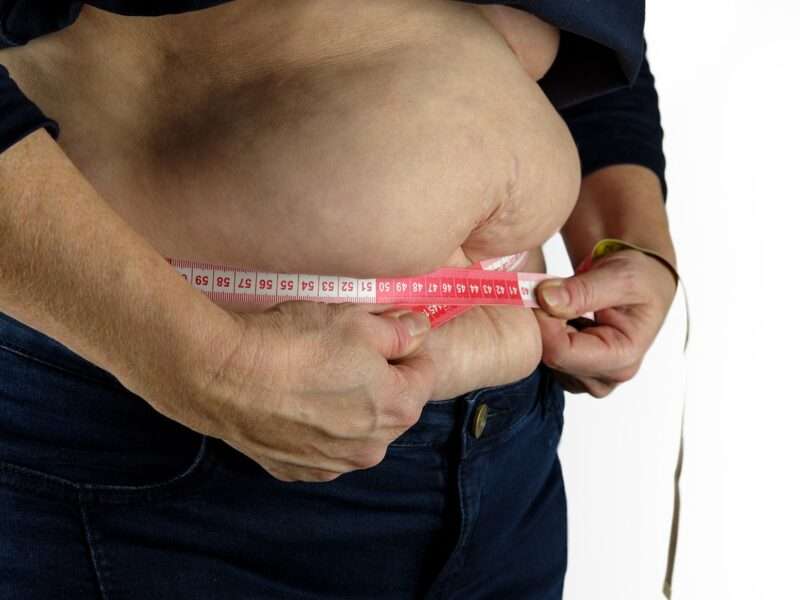Cardio workouts, such as running, cycling, and swimming, typically involve continuous, rhythmic movement that elevates the heart rate. On average, a person weighing 155 pounds can burn approximately 260 calories in 30 minutes of moderate-intensity cardio, and up to 391 calories in the same duration of vigorous-intensity cardio.
On the other hand, weight lifting involves resistance training to build muscle strength and endurance, and is sometimes underestimated in its calorie-burning potential. Light weightlifting for the same 155-pound individual can burn around 112 calories in 30 minutes.
Now that you have a general idea, let’s take a look at the caloric dynamics of these exercises to help you make informed choices for your workout routine.
How To Calculate Calories Burned By Weight Lifting?
Calculating the number of calories burned during weight lifting can be more complex than for cardio activities due to varying intensity levels, types of exercises to lose weight, and individual factors.
Using a standardized approach can help provide a more accurate estimate. One effective method involves using the Metabolic Equivalent of Task (MET) values.
The Metabolic Equivalent of Task (MET) is a standardized unit that estimates the amount of energy expended during various activities. Weight lifting activities typically range from 3 METs (light effort) to 6 METs (high intensity interval training).
Formula To Calculate Calories Burned Lifting Weights
To calculate the calories burned during a weightlifting session, you can use the following formula:
Calories Burned = MET × Weight in kg × Duration in hours
Step-by-Step Calculation
Step 1: Determine the MET Value
Identify the MET value corresponding to your weight lifting intensity:
- Light effort: 3 METs
- Moderate effort: 4.5 METs
- Vigorous effort: 6 METs
Step 2: Convert Your Weight to Kilograms
If your weight is in pounds, convert it to kilograms by dividing by 2.205.
Step 3: Determine the Duration of Your Workout
Convert the duration of your workout from minutes to hours by dividing by 60.
Step 4: Apply the Formula
Multiply the MET value by your weight in kilograms and then by the duration in hours.
For instance, let’s say a person weighs 154 pounds and performs moderate-intensity weight lifting for 1 hour:
- MET Value of Moderate intensity = 4.5 METs
- Weight: 154 pounds ÷ 2.205 = 70 kg
- Duration: 60 minutes ÷ 60 = 1 hour
- Calories Burned = 4.5 × 70 × 1 = 315 calories
Factors Affecting the Calculation
- Body Composition: More muscle mass increases calorie burn rate.
- Intensity: Higher weights and shorter rest periods increase MET value.
- Exercise Type: Compound exercises burn more calories than isolation exercises.
- Resting Metabolic Rate (RMR): Increased muscle mass from weight lifting raises RMR, leading to more calories burned lifting weights.
- Diet: Nutrition impacts your overall energy levels and metabolic rate. A well-balanced diet like a 30 30 30 meal plan can support muscle growth and recovery, enhancing your workout performance and the number of calories burned. Proper intake of macronutrients, magnesium such as proteins, carbohydrates, and fats, aids in weight loss, muscle repair and growth.
Calories Burned With Strength Training or Cardio
Strength training burns calories through both the physical exertion of lifting weights and the afterburn effect known as excess post-exercise oxygen consumption (EPOC). During the workout, calories are expended based on the intensity and type of exercises performed. With compound exercises like squats and deadlifts more calories are burned due to multiple muscle groups involved.
For example, a 154-pound person can burn approximately 112 calories in 30 minutes of light effort strength training (3 METs), 168 calories with moderate effort (4.5 METs), and 224 calories with vigorous effort (6 METs).
To increase the calorie burn rate, you can lift heavier weights with shorter rest periods, incorporate high-intensity interval training (HIIT), and ensure a balanced diet to fuel workouts and aid recovery.
On the other hand, a 154-pound person can burn about 260 calories in 30 minutes of moderate-intensity cardio and up to 391 calories during vigorous-intensity cardio.
Cardio activities, known as cross-training, can also help maintain a higher calorie burn rate by utilizing different muscle groups. Circuit training, which alternates between strength exercises and cardio exercises, keeps the heart rate elevated and increases calories burned.
Calories Burned Lifting Weights For 30 Minutes

During a 30-minute weight lifting session, the number of calories burned can vary based on several factors, including the individual’s weight, the intensity of the workout, and the specific exercises performed.
On average, a person weighing around 155 pounds or 70 kilograms can burn approximately 90-133 calories during 30 minutes of weight lifting, depending on the intensity.
Calories Burned Lifting Weights for 1 Hour
During a one-hour weight lifting session, the number of calories burned increases, obviously because the duration increases ( according to the formula).
For instance, a person weighing 180 pounds (82 kilograms) with:
- Light Effort: Approximately 200 calories burned
- Moderate Effort: Approximately 300 calories burned
- Vigorous Effort: Approximately 400 calories burned
The actual calories burned may vary depending on factors such as muscle mass, exercise selection, and individual metabolism.
Wrapping Up: Way To Burn More Calories
Even when you’re not doing a workout, staying active by walking, playing outside, or taking the stairs instead of the elevator can make a difference. Eating healthy foods that give you energy, drinking plenty of water, and getting enough sleep are also important.





